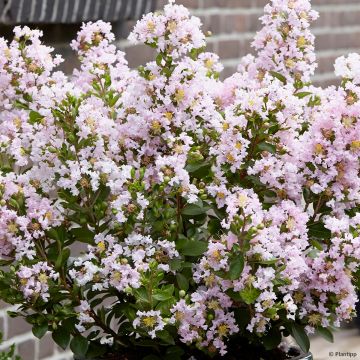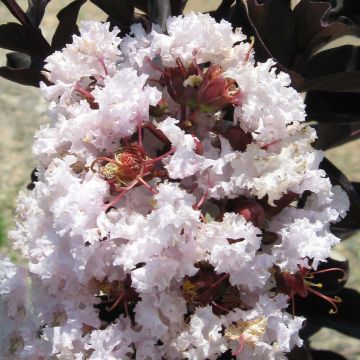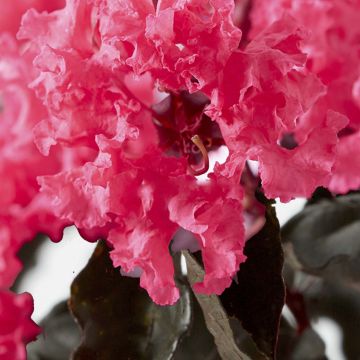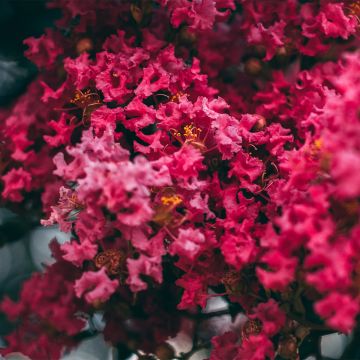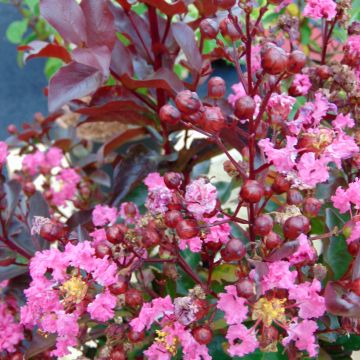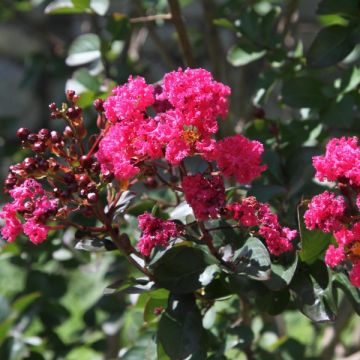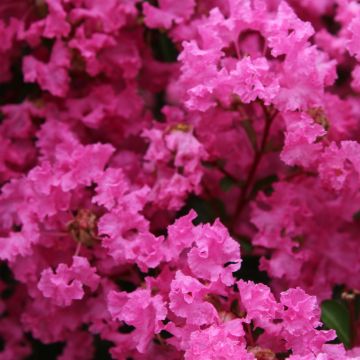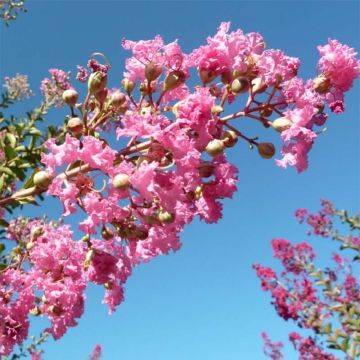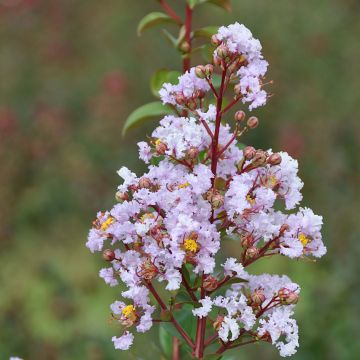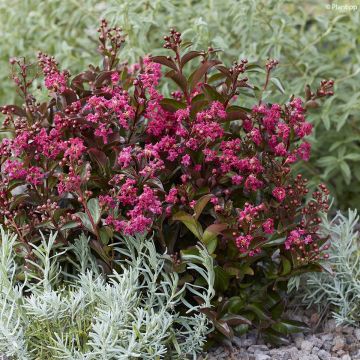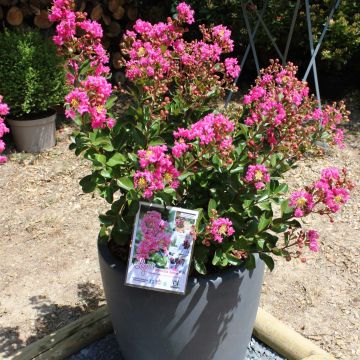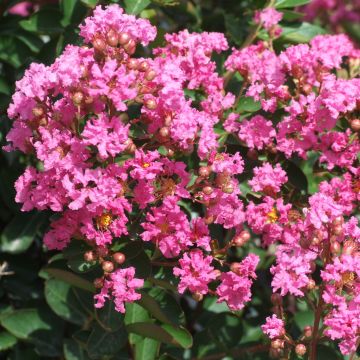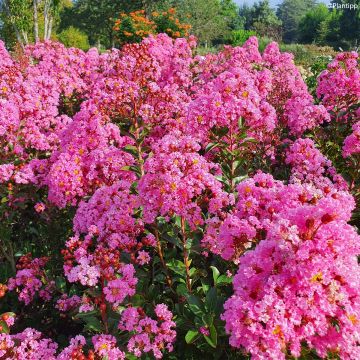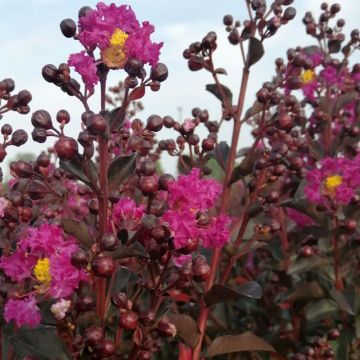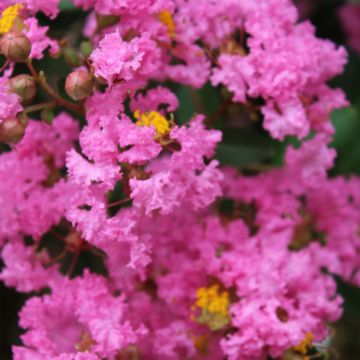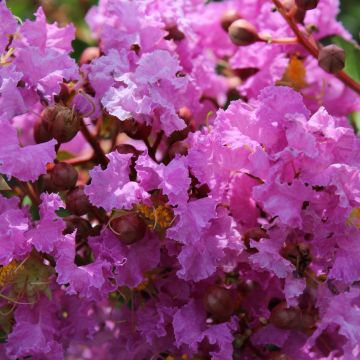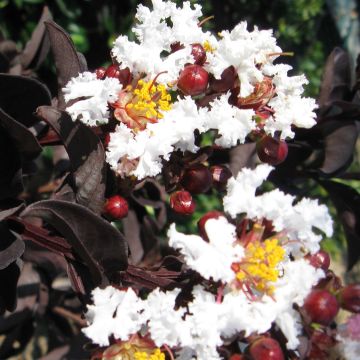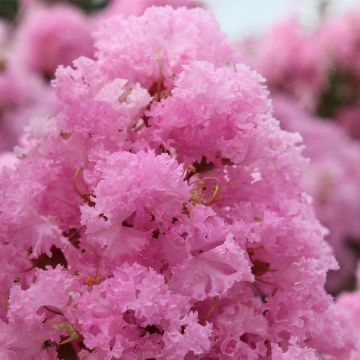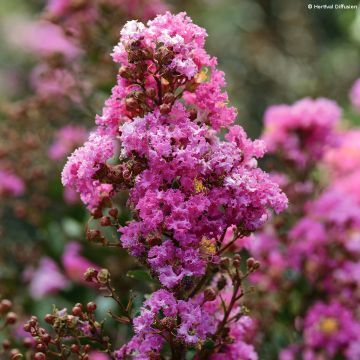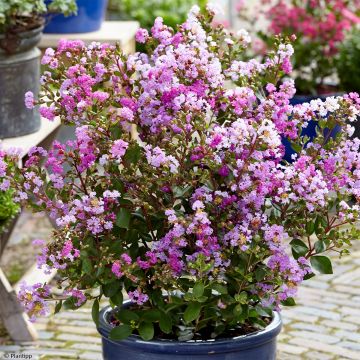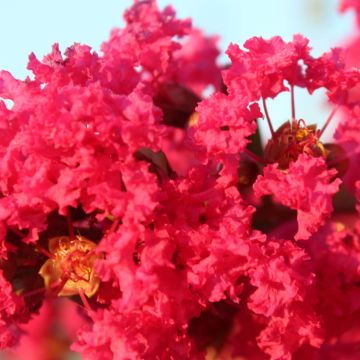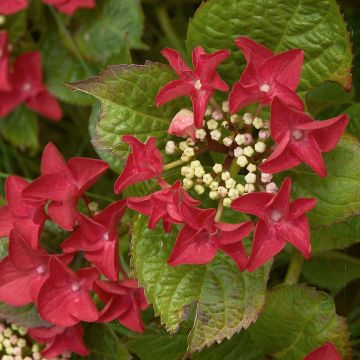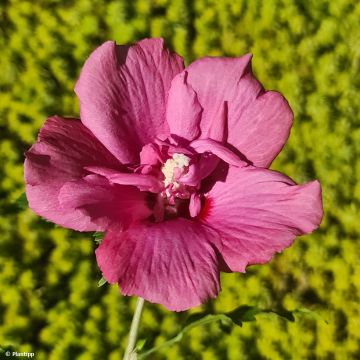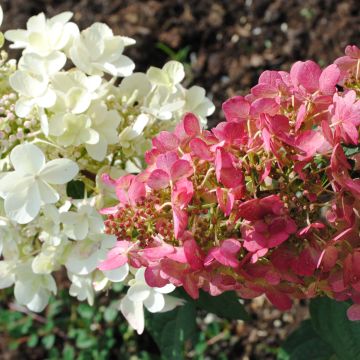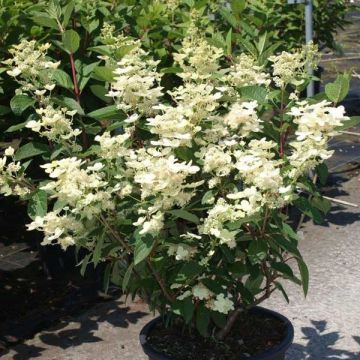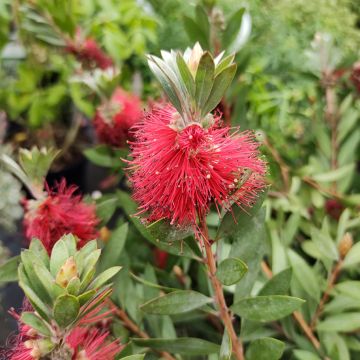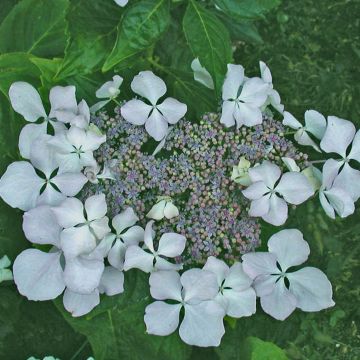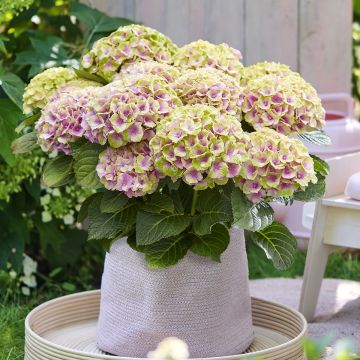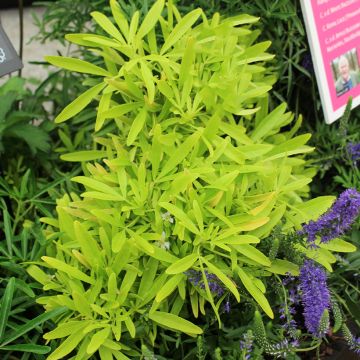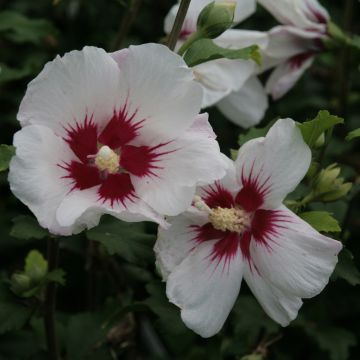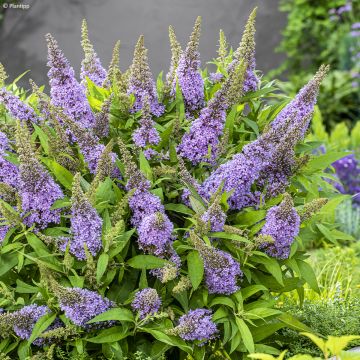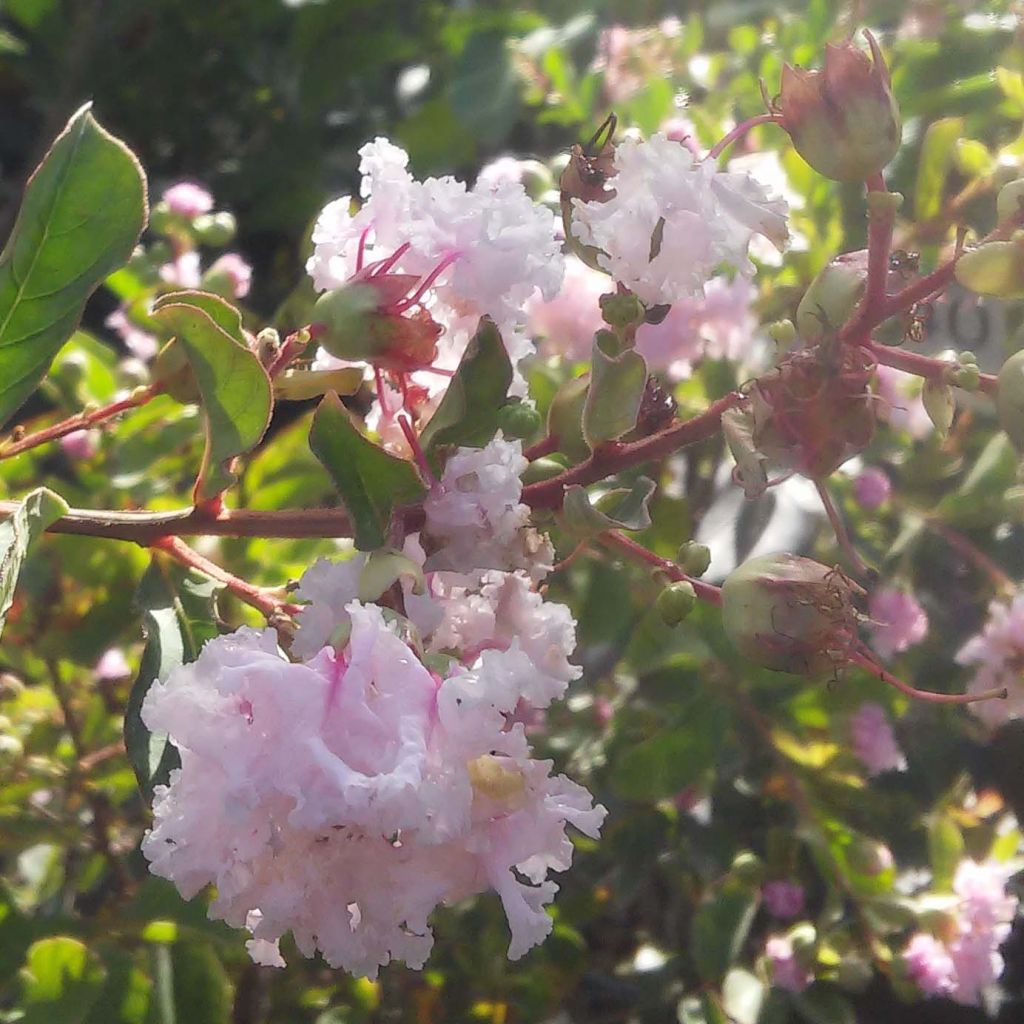

Lagerstroemia indica Summer Beauty Hope - Crape Myrtle
Lagerstroemia indica Summer Beauty Hope - Crape Myrtle
Lagerstroemia indica Summer Beauty Hope
Crape Myrtle, Crepe Myrtle, Indian Lilac
Why not try an alternative variety in stock?
View all →This plant carries a 24 months recovery warranty
More information
We guarantee the quality of our plants for a full growing cycle, and will replace at our expense any plant that fails to recover under normal climatic and planting conditions.
From €5.90 for pickup delivery and €6.90 for home delivery
Express home delivery from €8.90.
Delivery to Corse prohibited: UE law prohibits the import of this plant from mainland France to Corse as part of the fight against Xylella fastidiosa. Please accept our sincere apologies.
More information
Does this plant fit my garden?
Set up your Plantfit profile →
Description
The Lagerstroemia indica 'Hope' is a variety of Indian Lilac from the Summer Beauty series, gathering small development bushes with generous flowering, perfect in massif or in pot to decorate terraces and balconies. This one carries foamy clusters of a really charming light pink from the month of July. Summer Lilacs are also appreciated for their smooth bark, rich colourings, beautiful autumn colours and being ornamental all year round. These bushes like heat but appreciate a little freshness in summer to support their flowering. This one will make a sensation isolated in a small garden or in a pretty pot on the terrace.
The Lagerstroemia indica 'Hope', obtained in 1963 by Watts (USA), is part of a series of hybrids carefully selected for their compactness, precocity, floribundus, and their lesser sensitivity to Oïdium. This quite old American variety is still little diffused in the French horticultural trade.
'Hope' belongs to the Lythraceae family, like the Lagerstroemia indica, from which it is derived. Small in size, it will reach about 1.50 m (4 ft 11 in) in all directions at ripeness. Its growth is quite rapid. It chooses the beginning of July to start its flowering, which will continue until September. The large inflorescences, in ramified clusters, are composed of very numerous small flowers carried by thin pedicels. Each flower has five very undulate-edged petals, the texture of which recalls that of crepe. They are gathered in large, dense panicles, at the end of that year's branches.
In 'Hope', the floral buds bloom widely in pale pink flowers that slightly whiten over time, creating a subtle gradient of colours on the scale of the bush. The foliage, leathery and deciduous, is born bronze in spring, then becomes a bright and shiny green. It is composed of ovate leaves, which take lovely orange or coppery hues in the autumn, depending on the climate, before falling. Finally, to end in beauty, its bark is decorative: smooth, beige striate with grey, brown-red, peeling in coloured plaques (cinnamon, faded red, old pink, cream).
Indian Lilacs traditionally make the glory of the gardens of the South West. Preferring the humid and hot climates, this is a small tree that, in its improved forms, deserves to be acclimatised to colder areas, carefully choosing the variety and its location. Its hardiness and vigour allow it, like the new varieties of the Summer Beauty series. When positioned in an isolated location, near the house, you will be able to fully enjoy this plant's generosity. It will look good in a low bush massif, or in a small mixed variety and colour flower hedge, or emerging from a mound of perennials. In the autumn, it accompanies the equally colourful cotinus and the deciduous spindle trees, as colourful. In a large pot on the terrace, it puts on a show as the summer flowering slows down.
NB: Karl Von Linnaeus named this tree to honour his friend Magnus Von Lagestroem (1696 – 1759), who had sent it to him from India for identification. Originally, this tree was used to decorate Chinese temples. We would like to point out that this tree produces fruits that have a narcotic action in case of ingestion.
Report an error about the product description
Lagerstroemia indica Summer Beauty Hope - Crape Myrtle in pictures
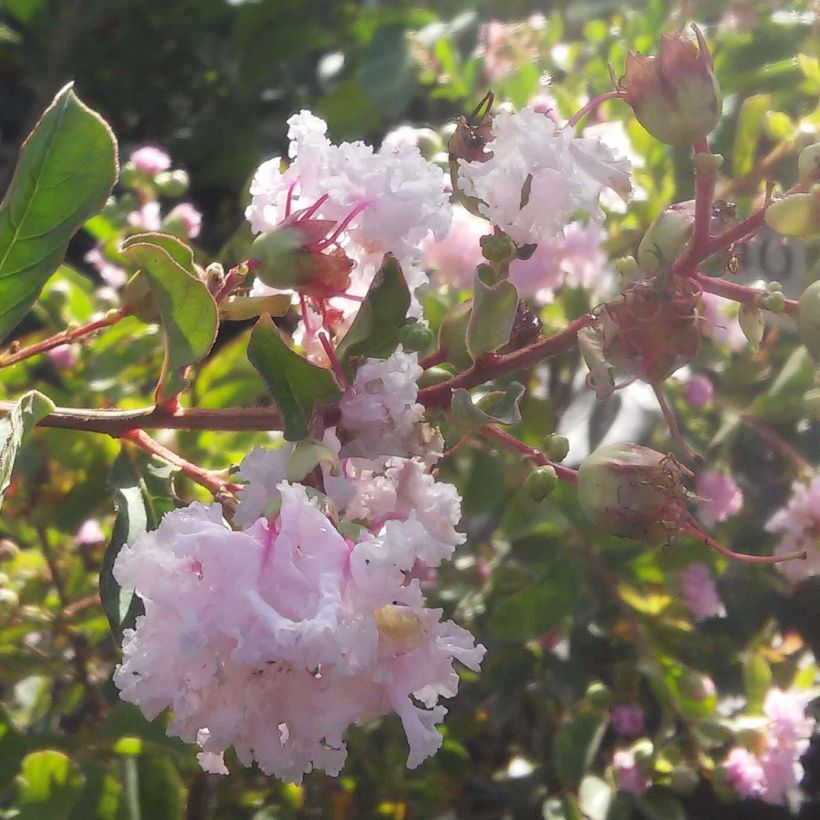

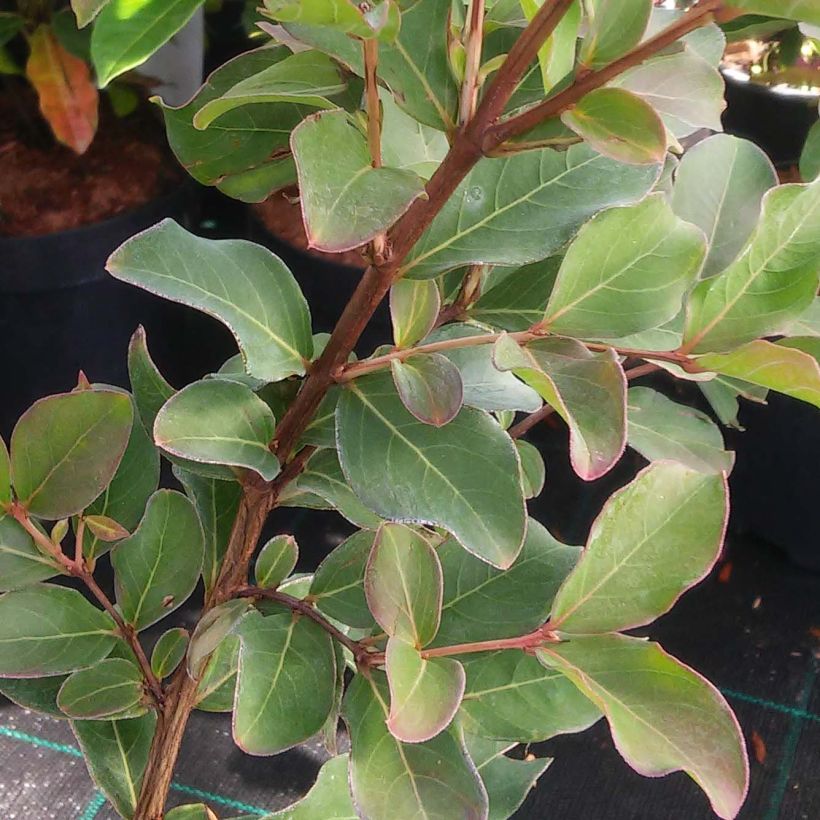

Plant habit
Flowering
Foliage
Botanical data
Lagerstroemia
indica
Summer Beauty Hope
Lythraceae
Crape Myrtle, Crepe Myrtle, Indian Lilac
Cultivar or hybrid
Other Lagerstroemia - Crape Myrtle
Planting and care
We advise you to plant the Lagerstroemia indica 'Hope' in spring, when frosts are no longer a threat, in a very sunny and sheltered situation, in rich soil, rather fresh, well-drained and if possible slightly acidic, neutral or low in lime. It will appreciate a contribution of compost and a thick layer of dead leaves, especially the first two winters in cold regions. It is necessary to prune the flowering branches very short in February-March, leaving only 4 to 6 buds to balance its branches and stimulate the growth of future flower-bearing branches. If necessary, remove weak twigs and poorly positioned branches.
Planting period
Intended location
Care
This item has not been reviewed yet - be the first to leave a review about it.
Summer-flowering shrubs
Haven't found what you were looking for?
Hardiness is the lowest winter temperature a plant can endure without suffering serious damage or even dying. However, hardiness is affected by location (a sheltered area, such as a patio), protection (winter cover) and soil type (hardiness is improved by well-drained soil).

Photo Sharing Terms & Conditions
In order to encourage gardeners to interact and share their experiences, Promesse de fleurs offers various media enabling content to be uploaded onto its Site - in particular via the ‘Photo sharing’ module.
The User agrees to refrain from:
- Posting any content that is illegal, prejudicial, insulting, racist, inciteful to hatred, revisionist, contrary to public decency, that infringes on privacy or on the privacy rights of third parties, in particular the publicity rights of persons and goods, intellectual property rights, or the right to privacy.
- Submitting content on behalf of a third party;
- Impersonate the identity of a third party and/or publish any personal information about a third party;
In general, the User undertakes to refrain from any unethical behaviour.
All Content (in particular text, comments, files, images, photos, videos, creative works, etc.), which may be subject to property or intellectual property rights, image or other private rights, shall remain the property of the User, subject to the limited rights granted by the terms of the licence granted by Promesse de fleurs as stated below. Users are at liberty to publish or not to publish such Content on the Site, notably via the ‘Photo Sharing’ facility, and accept that this Content shall be made public and freely accessible, notably on the Internet.
Users further acknowledge, undertake to have ,and guarantee that they hold all necessary rights and permissions to publish such material on the Site, in particular with regard to the legislation in force pertaining to any privacy, property, intellectual property, image, or contractual rights, or rights of any other nature. By publishing such Content on the Site, Users acknowledge accepting full liability as publishers of the Content within the meaning of the law, and grant Promesse de fleurs, free of charge, an inclusive, worldwide licence for the said Content for the entire duration of its publication, including all reproduction, representation, up/downloading, displaying, performing, transmission, and storage rights.
Users also grant permission for their name to be linked to the Content and accept that this link may not always be made available.
By engaging in posting material, Users consent to their Content becoming automatically accessible on the Internet, in particular on other sites and/or blogs and/or web pages of the Promesse de fleurs site, including in particular social pages and the Promesse de fleurs catalogue.
Users may secure the removal of entrusted content free of charge by issuing a simple request via our contact form.
The flowering period indicated on our website applies to countries and regions located in USDA zone 8 (France, the United Kingdom, Ireland, the Netherlands, etc.)
It will vary according to where you live:
- In zones 9 to 10 (Italy, Spain, Greece, etc.), flowering will occur about 2 to 4 weeks earlier.
- In zones 6 to 7 (Germany, Poland, Slovenia, and lower mountainous regions), flowering will be delayed by 2 to 3 weeks.
- In zone 5 (Central Europe, Scandinavia), blooming will be delayed by 3 to 5 weeks.
In temperate climates, pruning of spring-flowering shrubs (forsythia, spireas, etc.) should be done just after flowering.
Pruning of summer-flowering shrubs (Indian Lilac, Perovskia, etc.) can be done in winter or spring.
In cold regions as well as with frost-sensitive plants, avoid pruning too early when severe frosts may still occur.
The planting period indicated on our website applies to countries and regions located in USDA zone 8 (France, United Kingdom, Ireland, Netherlands).
It will vary according to where you live:
- In Mediterranean zones (Marseille, Madrid, Milan, etc.), autumn and winter are the best planting periods.
- In continental zones (Strasbourg, Munich, Vienna, etc.), delay planting by 2 to 3 weeks in spring and bring it forward by 2 to 4 weeks in autumn.
- In mountainous regions (the Alps, Pyrenees, Carpathians, etc.), it is best to plant in late spring (May-June) or late summer (August-September).
The harvesting period indicated on our website applies to countries and regions in USDA zone 8 (France, England, Ireland, the Netherlands).
In colder areas (Scandinavia, Poland, Austria...) fruit and vegetable harvests are likely to be delayed by 3-4 weeks.
In warmer areas (Italy, Spain, Greece, etc.), harvesting will probably take place earlier, depending on weather conditions.
The sowing periods indicated on our website apply to countries and regions within USDA Zone 8 (France, UK, Ireland, Netherlands).
In colder areas (Scandinavia, Poland, Austria...), delay any outdoor sowing by 3-4 weeks, or sow under glass.
In warmer climes (Italy, Spain, Greece, etc.), bring outdoor sowing forward by a few weeks.

































